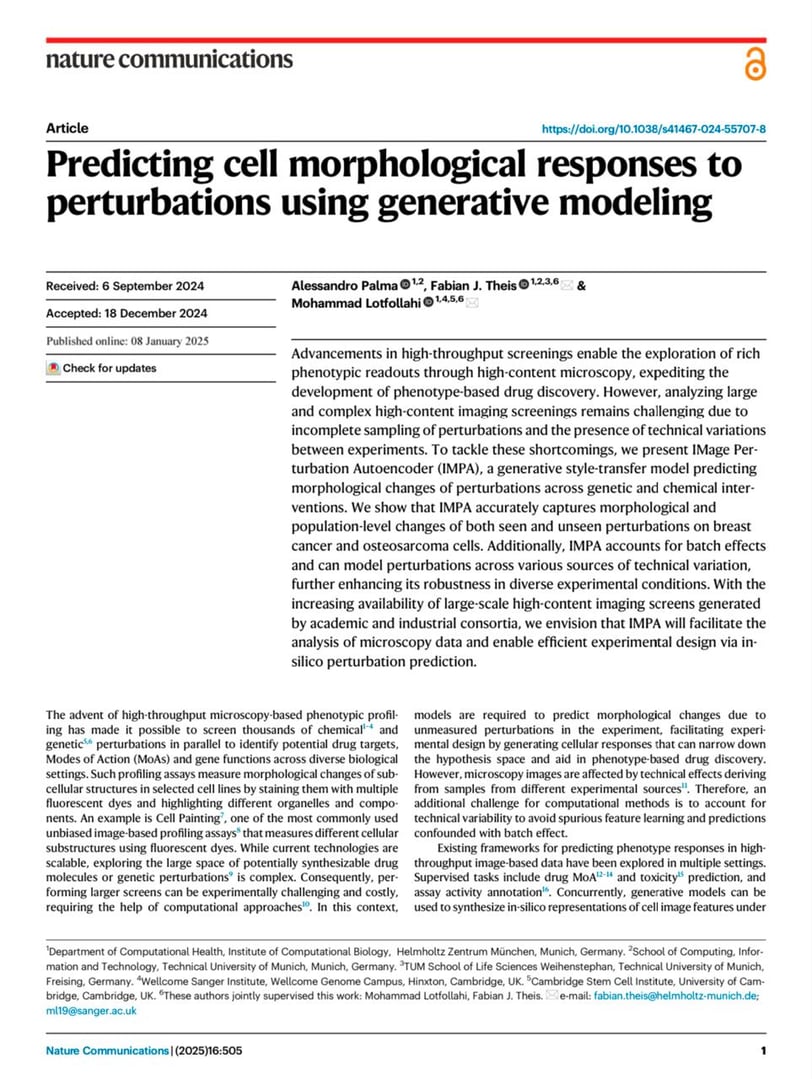Predicting cell morphological responses to perturbations using generative modelling
The paper of the Day presents IMPA, a generative adversarial model that performs phenotypic transformations on cell perturbation images and technical effect correction via style transfer. IMPA decomposes the representation of each image into a perturbation or batch space (style) an d a representation of the cell (content). This allows IMPA to generate the counterfactual image response to a desired chemical or genetic perturbation or transform a microscopy image collected from an experimental source into another to remove batch effects. IMPA is evaluated on predicting morphological changes after drug perturbation using the BBBC021 dataset and on batch correction using the RxRx1 dataset. IMPA outperforms several baseline models and can predict the effect of unseen perturbations by interpolating the chemical space derived from training compounds. The paper also shows that IMPA can combine chemical treatments with other types of perturbations and learn a joint perturbation space encompassing drug, CRISPR and overexpression assays.


